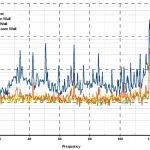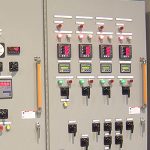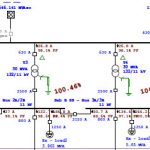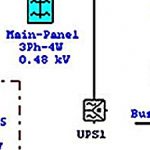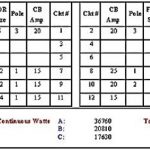
Carelabs is competent provider of Electrical Arc Flash Study, Analysis, Inspection, and Certification services in Middle-East, Africa & Asia.
Arc Flash Hazard Study and Analysis was first introduced IEEE 1584, known as “IEEE Guide for Performing Arc Flash Hazard Calculations,” about a decade ago. This landmark document defines equations and methods that have become key components of the arc flash study.
Although the study might have started in the United States, it has now washed across the entire globe and arc flash studies are becoming more common in other countries as well.
Why is Arc Flash Hazard Study and Analysis Important?
Those involved with the design, implantation and evaluation of electrical distribution systems mush have an understanding of arc flash hazards and how to evaluate the hazards as well as minimize or mitigate the hazard to the electrical worker. In order to perform the arc flash study a short circuit and coordination study must first be performed or the results of these studies must be available to the engineer performing the arc flash study.
The result of the arc flash study will categorize the hazard at specific equipment based on the incident energy, as well as identify the Arc Flash Protection Boundary (this is the closest approach allowed before PPE must be worn). Inside the Arc Flash Protection Boundary a worker must be wearing the proper clothing, or Personal Protective Equipment (PPE). The main objective of the PPE is to limit the burns to the body resulting from an arc flash event, to a survivable level. (i.e .2nd degree or less).
Carelabs Provides Complete Arc Flash Hazard Study and Analysis by Performing
- A full, on-site assessment.
- Arc flash modelling.
- Equipment evaluation relative to the fault current.
- Clearing coordination of your system with detailed one-line electrical model drawings.
Carelabs offer excellent services and/or will support your site team, local electrical contractor or engineering firm with any services you need. Our expertise is widely recognized in the industry and our engineers are members of IEEE, NFPA and IEC which set the standards for arc flash studies.
The Processes Involved in Arc Flash Hazard Study and Analysis?
Working within NFPA and IEEE guidelines, our experienced power systems engineers will perform accurate systematic Arc Flash Hazard Analysis as follows:
Short Circuit Calculations
We will either use your data or gather the data to make calculations for you to identify bolted and arcing fault levels at key points in a power distribution system.
Protective Device Coordination
We can perform an electrical systems coordination study or use the customer’s study, to determine the duration of the arcing faults.
Arc Flash Hazard Calculations
The incident energy level, the flash hazard boundary, and the PPE required are then calculated for each location.
Documentation
The information above is compiled for you into a comprehensive report, which contains information necessary to comply with regulatory requirements.
Unsafe Work Locations
The report will identify work locations having incident energy level in excess of available PPE ratings.
Arc Flash Hazard Mitigation
Recommendations will be made to minimize Arc Flash Hazards by changes in system protection or operational procedures.
Arc Flash Hazard Labels
In addition to the report, our customers will receive a field label containing the flash hazard boundary distance, incident energy level, and PPE category and shock category and shock hazard for each location.
How do we Conduct Arc Flash Hazard Study and Analysis?
We perform arc flash hazard study through following steps
Data Collection
Initial steps are data collection and determining modes of operation. To perform an arc flash hazard analysis, data is collected about the facility’s power distribution system. The data includes the arrangement of components on a one-line drawing with nameplate specifications of every device. Also required are details of the lengths and cross section area of all cables. The utility will be contacted for information including the minimum and maximum fault currents that can be expected at the entrance. The modes of operation are used to study worst case scenarios that may lead to arc flash, such as operations with circuit breakers open or closed or with certain motors or generators running or not running.
Engineering Analysis of the Data
Once the data has been collected, a short circuit analysis followed by a coordination study is performed. The resultant data is fed into the equations described by either NFPA 70E-2000 or IEEE Standard 1584-2002. These equations will produce the necessary flash protection boundary distances and incident energy to determine the minimum PPE requirement.
A short circuit study is required to determine the magnitude of current flowing throughout the power system at critical points at various time intervals after a “fault” occurs. These calculations will be used to determine the bolted fault current, which is essential for the calculation of incident energy and interrupting ratings of your equipment. A bolted fault current occurs as a result of two conductors becoming joined together. Comparison of equipment ratings with calculated short circuit and operating conditions will identify underrated equipment.
Protective Device Coordination
Once flash hazard analysis is performed, most likely it will be discovered that category 4 PPE will be required in most places. Compliance with the new arc flash regulations means that not only does the coordination study need to be more accurate but it also needs to take into account the fact that the arc fault current is less than the bolted fault current. Protective device coordination is performed to ensure selection and arrangement of protective devices limits the effects of an overcurrent situation to the smallest area. Results will be used to make recommendations for mitigation of arc flash hazards. Although this is an optional study, arc flash mitigation cannot be performed without completing this step. We perform this study in accordance with IEEE Std.
Arc Flash Calculations
In this step we determine incident energies and flash protection boundaries, respectively, for all equipment. The incident energy is the energy needed for an arc flash to cause second-degree burns. The flash protection boundary is specified as the distance where the incident energy or second-degree burns are caused. These calculations are based on available short circuit current, protective device clearing time and distance from the arc. Calculations of incident energy levels and flash protection boundaries will be completed for all relevant equipment busses.
Arc Flash Study and Analysis Report
Upon completion of the calculations, we will prepare your Arc Flash Report. This will be provided to you for a short review period, during which your team can evaluate modifications. At this point, we can hold meeting to deduce the report results. Upon approval, we will provide a final report and full sized one-line diagrams, stamped by our Registered Professional Engineer. The drawings and report will also be supplied to you in a digital format.
Label Installation
We will create and install arc flash warning labels. These labels pinpoint incident energy and working distance, nominal system voltage, and the arc flash boundary. In addition to standard requirements, our labels also contains Limited, Restricted and Prohibited approach boundaries, date, upstream protective device and recommended personal protection equipment(PPE). We can also provide bolted fault current if desired.
Who Needs Arc Flash Hazard Study and Analysis?
Most commercial, institutional, and industrial electrical systems have arc flash hazards. OSHA requires that those systems be individually analysed and, if hazards exist, labelled to identify the arc flash boundary. This will increase personnel safety, reduce shock hazards and reduce arc flash injuries. We can provide arc flash studies using the latest software. Tailored results by Carelabs allow you to reduce the cost of the services you need without paying for those you don’t need. We specialize in achieving fulfillment without excessive data and reports.

